Reza Khalidy
Role: Conference Bursary Recipient
Department: Engineering
Conference Attended: 2022 Joint Canadian Society of Soil Science (CSSS) Annual Meeting-Alberta Soil Science Workshop (ASSW)
Location: University of Alberta, Edmonton, Alberta, Canada
Value: $2,500.00
Research Presentation:
Crops and ecosystems are two themes of research conducted in FfT, aiming to meet ever-increasing global food demand and mitigate the environmental impacts of farming practices, respectively. Our research seeks to address these themes by applying Ca-rich minerals (wollastonite), as a limestone[1]alternative amendment, to agricultural soils, resulting in capturing atmospheric CO2 as calcium carbonates through soil-water-mineral interactions. Previous research in our group corroborated the effectiveness of this method for increasing the inorganic carbon content of the soil. Moreover, it came along with improvement in crop yield corresponded to the wollastonite application dosage. Our ongoing research on the pedogenic carbonate formation and migration in soils includes investigating the fate of soil carbonates in agricultural soil, first formed in topsoils due to mineral weathering and its downward movement in the subsoil at various depths and over time. We aim to develop a systematic procedure based on numerical and experimental tools for verifying pedogenic carbonates and estimating long-term carbon sequestration rate in the soil, enabling farmers to claim carbon credits for carbon sequestration due to mineral soil amendment. Presently, such programs are conducted by a US-based organization, Nori, for soil organic accumulation in crop fields.
Objectives for Attending:
My experience of attending conferences last year (the 2021 edition of the present conference and Goldschmidt 2021) taught me many things, including guidance and hints from experts and researchers working in the soil science field that helped us enhance the methodology of our project. Most importantly, we learned about the dynamics of organic carbon (and organic matter) in agricultural soils and how this can affect the enhanced weathering process due to the application of minerals enriched in divalent cations. A few activities held in the last year edition of the conference were related to negative emission technologies (NETs) of carbon through sustainable agricultural practices, which is a¬¬¬ critical aspect of our research. These include “Soil-derived greenhouse gases: Measurement and mitigation” and “Modelling carbon sequestration in Canadian landscapes to identify NETs opportunities to help realize Canada’s emission reduction pledge”, among some others. Therefore, participation in the conference this year is an excellent chance to update our knowledge on the topic and rectify our techniques once more. Moreover, we aim to continue making our research well known to other scholars dealing with “enhanced weathering in agricultural soils” topic, and get in touch with them for any potential collaboration. We also seek to present our approach to farming organizations that may be interested in adopting our methodology for inorganic carbon sequestration and storage. Finally, we hope to enhance our knowledge on the characterization of Canadian soils (especially those outside Ontario that we have limited information about) and get familiar with the hot topics on ongoing research of the soil environment in the country. This puts us in a position to evaluate the feasibility of examining our approach to other types of different soils dominating in other provinces of Canada. This issue is of importance as the several soils have different carbon capture capacity.

